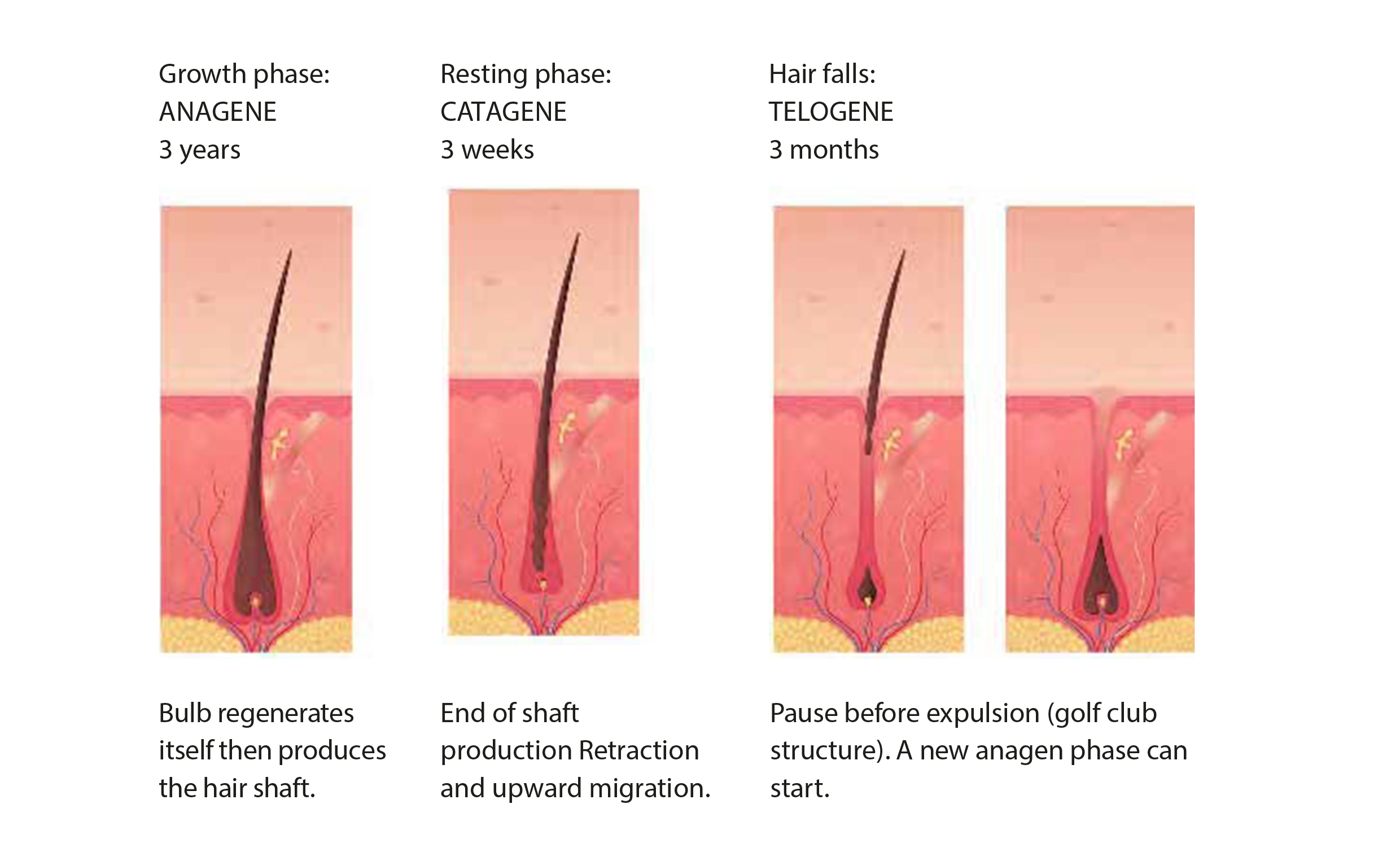Stimulate hair growth on the scalp


Most people don’t realize that there is a very important part underneath the visible hair from which hair can grow.
Hidden invisibly in the skin are the hair follicles (also called hair follicles). A hair follicle is approximately 4 to 6 millimeters long and produces 1 to 4 tiny hair shafts of about 0.1mm each.


We divide hair growth into 3 phases: 1. the anagen phase, 2. the catagen phase, and 3. the telogen phase. Hair grows on average about 1 to 1.25 cm per month.
So, hair originates from the scalp in groups of 1 to 4 strands, and possibly even 5 to 6 strands. Hair follicles occur in natural groups called follicular units.
The anagen phase is the hair growth phase and has a cycle of between 2 and 7 years, with an average of about 3 years. The catagen phase is the transition phase between a growth and a resting phase. During this time, a hair follicle retreats and detaches from the subcutaneous layer (hypodermis). The hair root will then disappear and deform into a knot-like end. Approximately 1% of the hair is in this 2-week catagen phase.
The remaining hairs are in a resting phase and do not actively grow. This is called the telogen phase. In a healthy scalp, this lasts about 3 to 5 months. How much hair loss per day is normal? It is normal to lose 60 to 100 hairs per day, which is quite normal, but if it becomes much more than this, it is considered excessive hair loss. However, it is also true that someone who washes their hair once a week will find much more hair in the drain compared to someone who washes their hair daily. Aside from the hairs that still end up on your clothing or pillowcase.